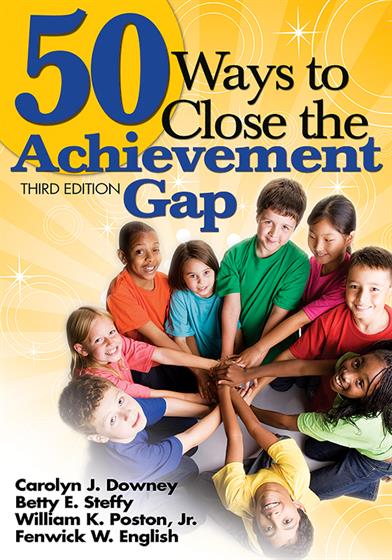Preface
Acknowledgments
About the Authors
Introduction
Six Standards for High-Performing Schools
1. Standard One: Establish a Well-Crafted, Focused, Valid, and Clear Curriculum to Direct Teaching
Strategy 1: Embed External Assessment Target Objectives in the Written Content Standards and Link to State Standards
Strategy 2: Have Clear and Precise District Curriculum Objectives - Content, Context, and Cognitive Type
Strategy 3: Deeply Align Objectives From External Assessments
Strategy 4: Sequence Objectives for Mastery Well Before They Are Tested
Strategy 5: Provide a Feasible Number of Objectives to Be Taught
Strategy 6: Identify Specific Objectives as Benchmark Standards
Strategy 7: Place Objectives in a Teaching Sequence
Strategy 8: Provide Access to Written Curriculum Documents and Direct the Objectives to Be Taught
Strategy 9: Conduct Staff Development in Curriculum and Its Delivery
2. Standard Two: Provide Assessments Aligned With the Curriculum
Strategy 10: Develop Aligned District Pre-Post Criterion-Referenced Assessments
Strategy 11: Have a Pool of Unsecured Test Items by Objective
Strategy 12: Establish Secured Performance Benchmark Assessments
Strategy 13: Conduct Assessment Training
Strategy 14: Use Assessments Diagnostically
Strategy 15: Teach Students to Be "Test Wise"
Strategy 16: Establish a Reasonable Testing Schedule and Environment
Strategy 17: Disaggregate Assessment Data
Strategy 18: Maintain Student Progress Reports
3. Standard Three: Align Program and Instructional Resources With the Curriculum and Provide Student Equality and Equity
Strategy 19: Align Programs With the Curriculum to Ensure Congruity
Strategy 20: Use Research Data That Document Results to Drive Program Selection, and Validate the Implementation of Programs With Action Research
Strategy 21: Evaluate Programs to Determine Their Effectiveness in Strengthening Student Achievement of Curriculum Objectives
Strategy 22: Align Textbooks and Instructional Resources With the District Curriculum Objectives and Assessment in Both Content and Context Dimensions
Strategy 23: Use Technology in Design or Selection Procedures to Ensure Strong Connections to System Learning Expectations and Feedback
Strategy 24: Provide Training in the Use of Instructional Resources and Their Alignment With System Curriculum Objectives - Content, Context, and Cognitive Type
Strategy 25: Select or Modify Instructional Resources for Lessons to Ensure Full Alignment With System Objectives and Tested Learning
Strategy 26: Place Students in Programs and Activities in an Equitable Manner and With Equal Access to the Curriculum
Strategy 27: Implement Effective Programs and Strategies With English Language Learners
4. Standard Four: Use a Mastery Learning Approach and Effective Teaching Strategies
Strategy 28: Implement a Mastery Learning Model
Strategy 29: Align Teaching With the Curriculum
Strategy 30: Provide Differentiated Curriculum and Instruction as Well as Differentiated Time to Learn
Strategy 31: Provide Practice to Master the Curriculum
Strategy 32: Use Effective Instructional Practices
Strategy 33: Use Powerful Vocabulary Development Strategies
Strategy 34: Establish Individual Learning Plans for Low-Achieving Students
5. Standard Five: Establish Curriculum Expectations, Monitoring, and Accountability
Strategy 35: Provide for High Expectations for Achievement for Each Student
Strategy 36: Monitor the Curriculum
Strategy 37: Visit Classrooms and Provide Follow-up
Strategy 38: Use Disaggregated Data in the Decision-Making Process
Strategy 39: Focus Staff Appraisal on Professional Growth
6. Standard Six: Institute Effective District and School Planning, Staff Development, and Resource Allocations, and Provide a Quality Learning Environment
Strategy 40: Develop a District Planning Process That Is Strategic in Nature and Provides Guidance for the Development of District and School Long-Range Plans
Strategy 41: Create and Implement a Singular, Focused, Multiyear District Plan That Incorporates Change Strategies for Higher Student Achievement
Strategy 42: Align School Plans With the District Plan
Strategy 43: Implement Aligned Teacher Training to Reach District and School Goals
Strategy 44: Implement Administrative Training Aligned With the Curriculum and Its Assessment and District Plan Priorities
Strategy 45: Provide Differentiated Staff Development
Strategy 46: Link Resource Allocations to Goals, Objectives, Priorities, and Diagnosed Needs of the System
Strategy 47: Provide Qualified and Adequate Personnel
Strategy 48: Remove Incompetent Staff or Help Them Achieve Satisfactory Functioning
Strategy 49: Provide a Quality Learning Environment
Strategy 50: Provide Quality Facilities
Summary
References
Index






